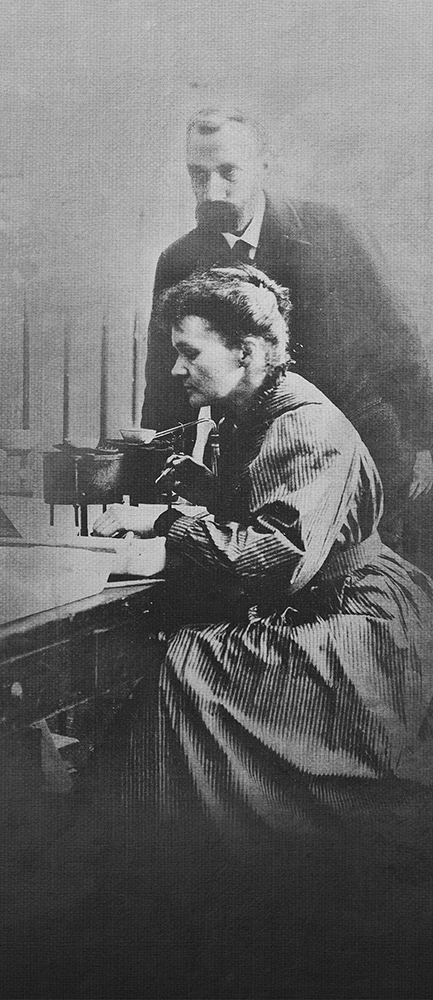
Maria Skłodowska Curie
physicist and chemist, a two time Noble Prize winner
(born on 07.11.1867 in Warsaw, died on 04.07.1934 in Passy, France)
Madam Curie is, from all the people in the world, the only person not spoiled by her fame – Albert Einstein about Maria Skłodowska-Curie
Maria Skłodowska-Curie was an extraordinary person, who not only overcame social conventions unfavourable to women of her time, but also made history as an outstanding, Nobel Prize winning scientist.
The earliest years of Skłodowska's life were spent in Warsaw. This is where she was born - in a tenement at Freta 16. Here too, she took her first science lessons - in Żeńskie Gimnazjum Rządowe (The Government Middle School for Girls) and an illegally operating academy called Uniwersytet Latający (The Flying University).
In 1891 the 24-year-old Maria fulfils her greatest dream – persuaded by her sister she leaves for France. There, in the department of physics and chemistry at the Sorbonne University in Paris she continues her career in science.
The atmosphere in the city of love clearly favours the young Polish woman. In 1894 she meets a French physicist named Pierre Curie. A year later, the couple gets married while conducting advanced research on radioactivity. The fruit of their joint work turns out to be unprecedented. Maria and Pierre discover two new chemical elements - radium and polonium, and for this achievement they are awarded the Nobel Prize in Physics (1903).
The science success showers Skłodowska-Curie with glory. It earns her the title of professor, her own chair at the Sorbonne (the first woman in history!) and permanent access to a laboratory, enabling her to continue her studies. Unfortunately, she has to continue the work on her own. In 1906 Pierre dies in a road accident. Maria - a single mother of two children - must henceforth reconcile her household responsibilities with research.
Despite this adversity, Skłodowska-Curie continues to triumph in science. Thanks to the separation of radium in its pure form, in 1911 she receives her second Nobel Prize - this time in chemistry. The Pole also finds success in popularizing issues related to radioactivity and its positive impact on cancer treatment. On Maria's initiative a number of medical facilities are established around the world, including Radium Institutes in France and Poland.
Maria Skłodowska-Curie literally devoted her life to science. As a result of years of absorbing high doses of radiation, she fell ill with leukaemia. She died on July 4, 1934 in the Alpine sanatorium Sancellemoz in Passy. The body of Nobel Prize winner now rests in the Paris Pantheon - the only woman and the only person born outside France.
Do you know?
- The name of the element polonium comes from the Latin for Poland – Polonia.
- Maria Skłodowska-Curie was one of the first women of her era that passed the driving test.
- After the death of Pierre Curie, Maria was suspected of having an affair with a family friend, a scientist Paul Langevin. After many years, history made a full circle. Skłodowska's granddaughter, Helene Joliot, married the grandson of Paul Langevin, Michel.
- Daughter of Maria Skłodowska-Curie, Irene Joliot-Curie continued the family scientific tradition and in 1935 received a Nobel Prize for her research on radioactivity.
- The building at Freta 16 houses a museum devoted to Maria Skłodowska.
- There are the two monuments of the Nobel Prize winner in Warsaw. The first, from 1935, is located at the corner of Wawelka and the Sklodowska-Curie streets, near the Oncology Institute (founded at the initiative of Maria). The second monument was unveiled in the New Town in 2014.
- A careful observer will find on the streets of Warsaw murals commemorating Skłodowska. They can be found on, among others, the building on Freta street, on the wall next to Metro Centrum station and the building at Lipowa street.






